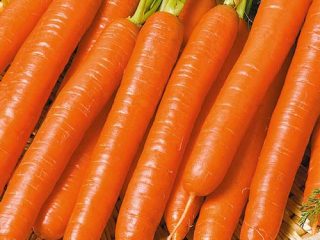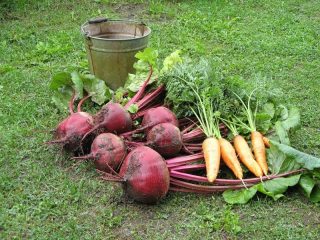Content
Every year, astrologers make recommendations for gardeners and gardeners; everyone decides for themselves whether to follow them or not. But it is advisable for anyone who wants to get a good harvest to know.
Lunar calendar recommendations
Astrologers recommend sowing carrots on the waning moon, on the days of fertile zodiac signs.
Sowing
In March, sowing carrots can be recommended for the southern regions, since in the northern regions the soil has not yet thawed at this time.
Northern regions usually plant carrots in April, when the soil is warm enough. You can focus on the soil temperature - carrot seeds begin to germinate at temperatures above 4 degrees, they are not afraid of temperatures dropping to -4 degrees. At temperatures below this, the seeds may freeze.
To plant carrots, choose a dry, sunny area. Carrots are very sensitive to nutrient deficiencies, but excess nitrogen can seriously harm the crop. Overfed carrots begin to branch; root vegetables are very poorly stored in winter. Therefore, before sow carrots, it is necessary to add a complex of microelements without nitrogen; it is best to add it to the soil before planting the previous crop.
The beds are marked in the prepared soil, the distance between the rows of carrots should be at least 10 cm. The carrots are sown in grooves 2-3 cm deep. To make the rows even, you can make grooves, focusing on a stretched tape.
Carrot seeds are quite small and sowing them is quite difficult. Many gardeners sow carrot seeds, mixing them with various substances that can later serve as fertilizer. For these purposes you can use:
- Sand;
- Humus;
- Starch;
- Ash.
If you sow carrots with the addition of these substances, you can avoid thickened plantings, saving seeds.
After sowing, the furrows are filled with soil and carefully watered with sprinkling. Carrot seeds take a long time to germinate, from 10 to 40 days. Maintaining the required humidity during this period is quite problematic. Therefore, you can cover carrot crops with agrofibre or other dense material until germination.
In northern regions, carrots can be planted in ridges or warm beds. So, the earth warms up faster, the roots do not suffer from excessive rainfall.
The beds for sowing carrots are made high, up to 50 cm, and grooves are made on the surface of the bed. Before sowing carrots, the furrows are covered with a small layer of ash; this can protect the seedlings from carrot flies.If the soil is heavily infested with this pest, it is necessary to treat it with chemicals.
Carrot seeds are sown when the soil is warmer than 4 degrees; warming the ridge to this temperature can be accelerated by covering the surface with black film.
Warm beds are made in the fall. They consist of several layers:
- Drainage;
- Organics;
- Nutritious soil.
Plant carrots You can plant in warm beds without waiting for warmer weather; just cover the crops with black film. After the carrots sprout, the film is replaced with a transparent cover.
Watering
You can water carrots both on the waning and waxing moon; it is advisable to choose days that are under the protection of the signs of the water element - Cancer, Scorpio, Pisces.
Watering carrot beds should be done very carefully; its root system does not like excess moisture. Before carrots sprout, the beds need to be watered almost daily; after the first true leaf appears on the sprouts, watering of the carrots is reduced.
Water carrots only when necessary; the soil must dry out between waterings. In spring, watering once a week is sufficient in the absence of precipitation. In summer, watering carrot beds can be increased to 2 times a week.
In many regions, carrots are not watered at all, believing that they have enough moisture from precipitation. This can often lead to the loss of part of the harvest, since carrots that are over-watered after a drought can crack.
Weeding
To weed carrot beds, it is advisable to choose a day of the full moon; perennials damaged on such a day weeds will take a very long time to grow.Also suitable days for working in carrot beds are on the waning moon.
It is important to weed carrots on time, because at the beginning of development, carrots grow very slowly. Weed seeds grow quickly, robbing carrots of sunlight and nutrients. Carrots should be weeded carefully; a damaged seedling system cannot be restored. If the seedlings do not die, the fruits may grow deformed.
Fertilizer application
It is advisable to fertilize carrots on the waxing moon, on the days of fertile zodiac signs.
Fertilizers are applied in advance during digging, or when to plant carrots. You can use store-bought fertilizers or make your own. When deciding which fertilizer is best for carrots, you need to keep in mind that it is impossible to find out the exact amount in homemade fertilizers.
Potassium is necessary for carrots at all stages of growth; its deficiency manifests itself in yellowing of the lower leaves and slower growth. The fruits of such carrots are bitter, because with potassium deficiency, the accumulation of sugars stops. Ash can be a natural source of potassium.
Magnesium is involved in many metabolic processes of the plant. With a lack of magnesium, the immune system of carrots suffers. Fruits can be affected by various types of rot and bacterial diseases. Carrots get magnesium from humus and other organic substances. Many regions are poor in magnesium, and even a large amount of humus is unable to compensate for the deficiency; it is better to apply this element to carrot beds in the form of chelated fertilizers.
Iron, iodine, boron, phosphorus and other trace elements are also very important for photosynthesis processes during carrot growth. It is advisable to introduce substances that contain these elements every year.A natural source of these elements for feeding carrots can be an infusion of weeds.
Let's sum it up
If you can’t follow the advice of the lunar calendar, you shouldn’t be upset. If you sow carrots in well-prepared beds, apply fertilizers on time, and protect them from pests, you can get an excellent harvest.














